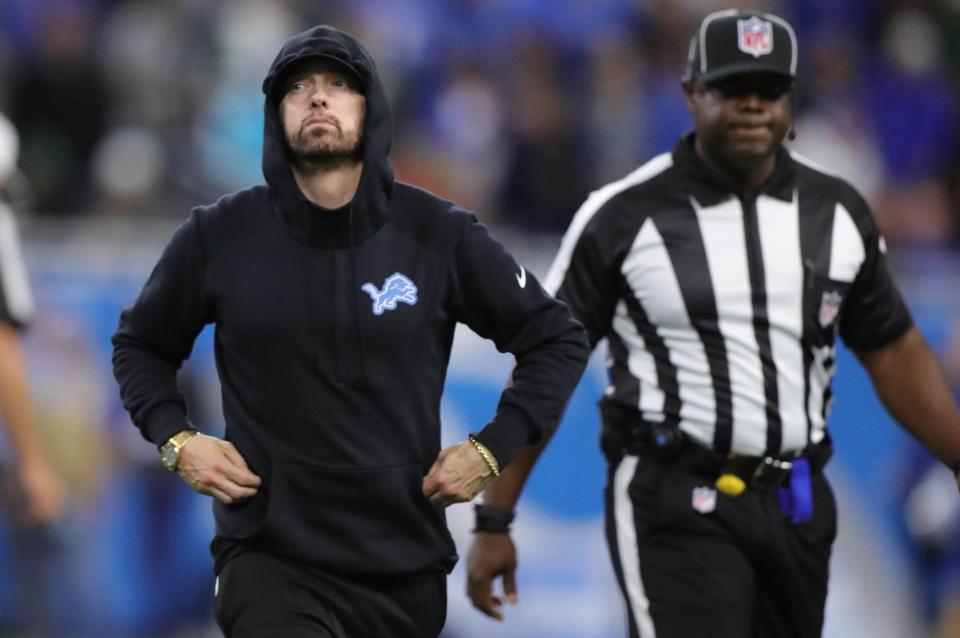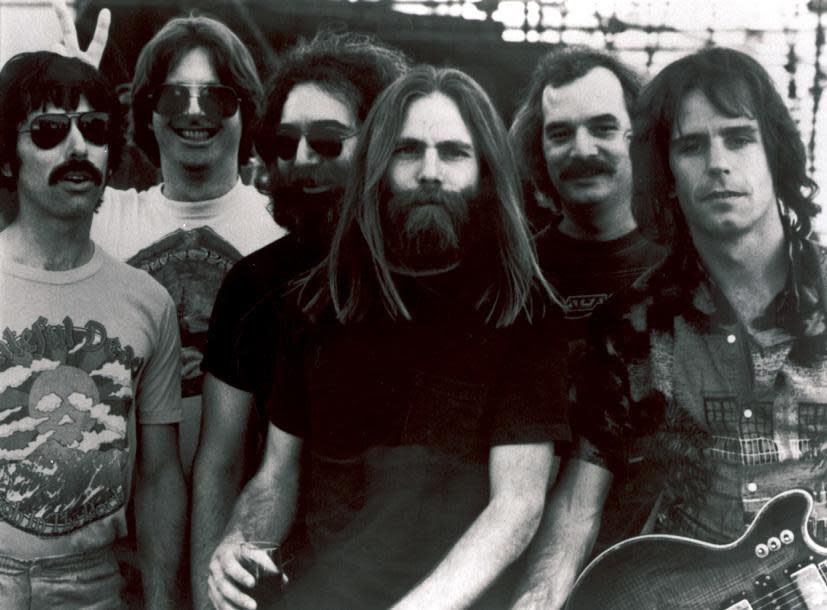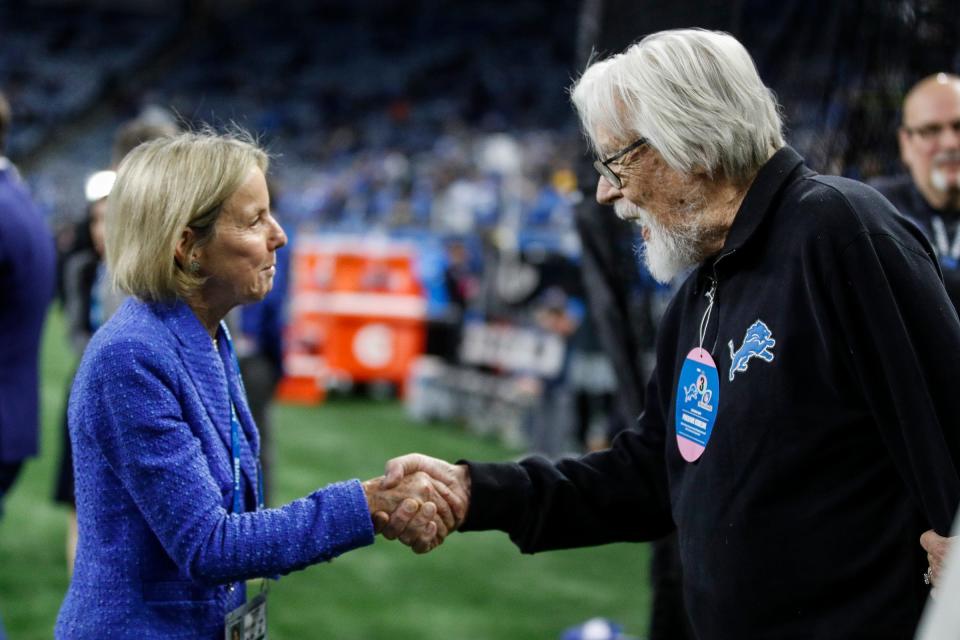Detroit vs. San Francisco: A clash of 2 powerhouse music cities
Two prestigious music histories. Two global reputations as American music capitals. Two massive lists of trailblazing, top-selling artists.
Few places have contributed more to modern music than Detroit and San Francisco — the cities that will go head-to-head Sunday evening when the Lions meet the 49ers for a shot at the Super Bowl.
This tale of two cities is a decades-long story of groundbreaking artists working on fertile creative soil, both with bigtime legacies to show for it.

Detroit’s prominence as a musical powerhouse has certainly made life easy for the NFL’s national broadcast partners, who often adorn their Lions telecasts with Motor City songs. For last week’s matchup against the Tampa Bay Buccaneers at Ford Field, NBC’s bumper music included stuff by Aretha Franklin, the Temptations, Martha Reeves, Iggy Pop and Mitch Ryder.
The White Stripes’ “Seven Nation Army” has become a sports anthem at stadiums around the globe. But when crowds at Ford Field break into that riff in full voice, as they did during the closing minutes of that Lions triumph last week, the effect is especially powerful. It’s a homegrown song, after all.
Detroit’s musical heritage is formidable, but the San Francisco Bay Area has its own impressive claim.
They’ve got the Grateful Dead, Metallica, Journey, Jefferson Airplane, Santana, the Steve Miller Band. Detroit boasts Aretha Franklin, Eminem, Bob Seger, expat Madonna and — courtesy of a little house on West Grand Boulevard — that vast galaxy of Motown stars: Stevie Wonder. Diana Ross & the Supremes. Marvin Gaye. Smokey Robinson. The Temptations. Martha Reeves. Four Tops. The Jackson 5.
San Fran produced Maze, the Counting Crows, Faith No More, the Dead Kennedys. Detroit provided Anita Baker, Aaliyah, Kid Rock, J. Dilla. They boast Sly and the Family Stone; we’ve got George Clinton and Parliament-Funkadelic. They produced Huey Lewis & the News; in a bit of “Ghostbusters” synchronicity, we birthed Ray Parker Jr.

Metallica, for what it’s worth, appears to be putting its energy behind the Lions this weekend. Maybe that destiny got locked in when history’s most successful metal band played Ford Field last fall and engaged in some social media fun with Lions head coach and diehard Metallica fan Dan Campbell.
And so Wednesday, when the Lions’ Instagram account quoted lyrics from Metallica’s “No Leaf Clover” alongside a photo of defensive end Adian Hutchinson, the band promptly responded: “In Dan we trust #OnePride”
(To be fair, the band’s 49ers allegiance may be shaky: Though Metallica was based in the Bay Area during its essential years, the group was formed in Southern California.)
San Francisco’s musical legacy is shaped in large part by psychedelic rock, dance music and metal. Detroit has graced the world with influential hard rock, techno and, of course, the genre that etched the city into its very name: Motown.

This isn’t some competition — we’re not here to document a fight nobody was having in the first place. Indeed, when it comes to music, Detroit and San Francisco have been symbiotic through the decades, with influences and inspirations running both directions and blossoming into distinct regional styles and sounds.
San Francisco’s Fillmore, for instance, was the epicenter of concert counterculture in the ‘60s, and Detroit’s quickly arranged counterpart, the Grande Ballroom, was inspired by that famed hippie hub. But as late Grande founder Russ Gibb liked to point out, his venue had a Motor City grit that separated it from the Haight-Ashbury vibe — less flower power, more blue-collar muscle.
On the rock front, that’s been a recurring theme: Rolling Stone magazine, for example, was founded in San Francisco, introducing the notion of rock journalism as a legitimate pursuit. Detroit ran with that concept and launched its primary competitor, Creem, embracing a more rambunctious, irreverent voice.
The leading bands of Detroit counterculture were cut from the same cloth. The beatnik bohemian scene of 1950s San Francisco planted key seeds for the ‘60s music revolution, helping transform rock ‘n’ roll into rock. In Detroit, that spirit was fuel for groups such as the MC5 and the Stooges, but they injected a heavier, more concentrated whomp than the noodly psychedelia of the Bay Area and were part of a Motor City bloodline that endured through bands such as the White Stripes.

And Detroit’s rich jazz scene was cross-country inspiration for many of the above, with some figures — such as saxophonist Joe Henderson — planting feet in both cities.
When it’s all said and done, Detroit and San Francisco reign as two of America’s undisputed music capitals, part of an elite short list that includes New Orleans, Nashville, Memphis and New York.
And we can enjoy the listening regardless: It’s all about the music, no matter the source. May the real battle — and a Detroit victory — take place on the gridiron Sunday.
Contact Detroit Free Press music writer Brian McCollum: 313-223-4450 or [email protected].
This article originally appeared on Detroit Free Press: Detroit vs. San Francisco: A clash of 2 powerhouse music cities
